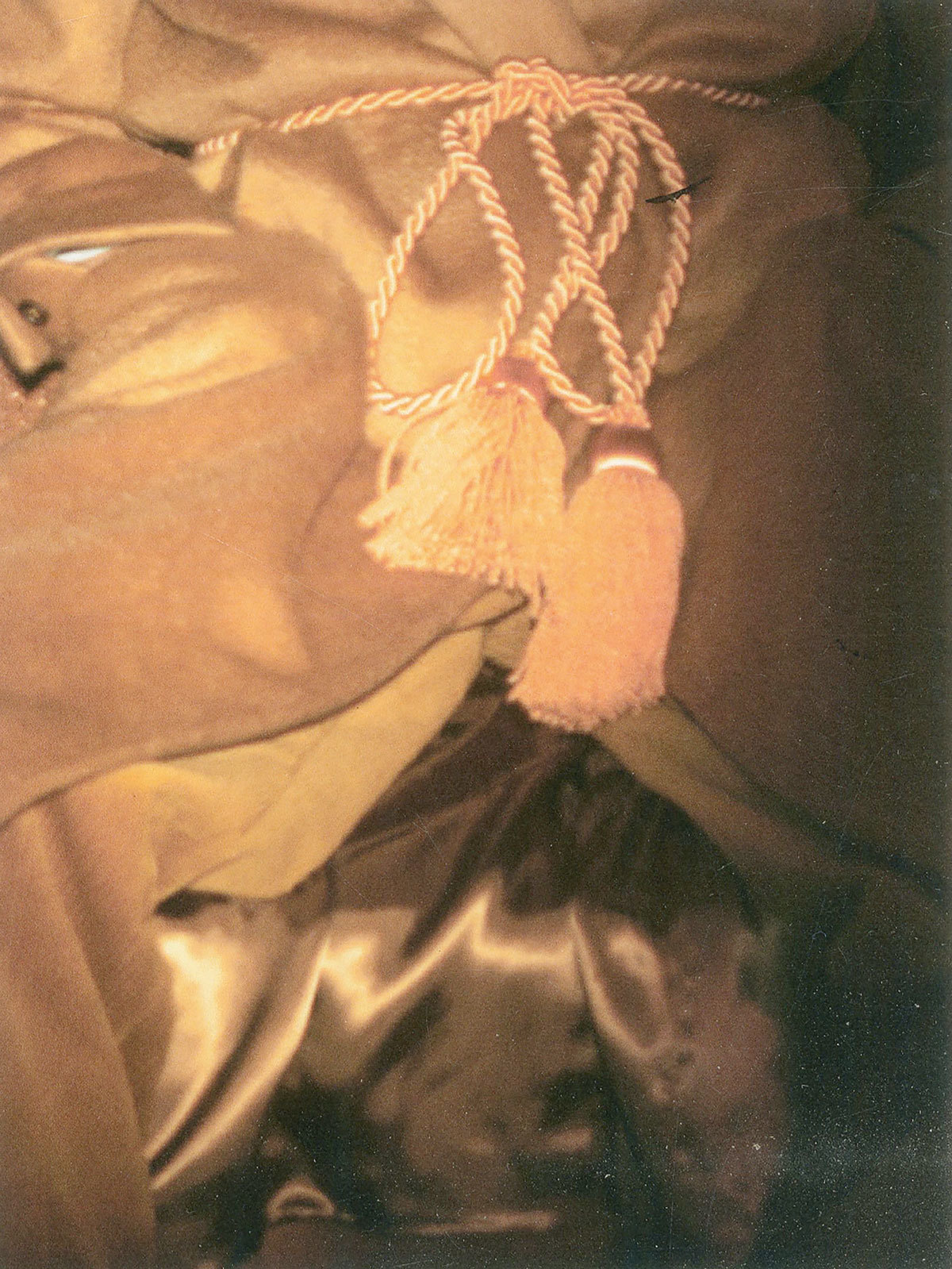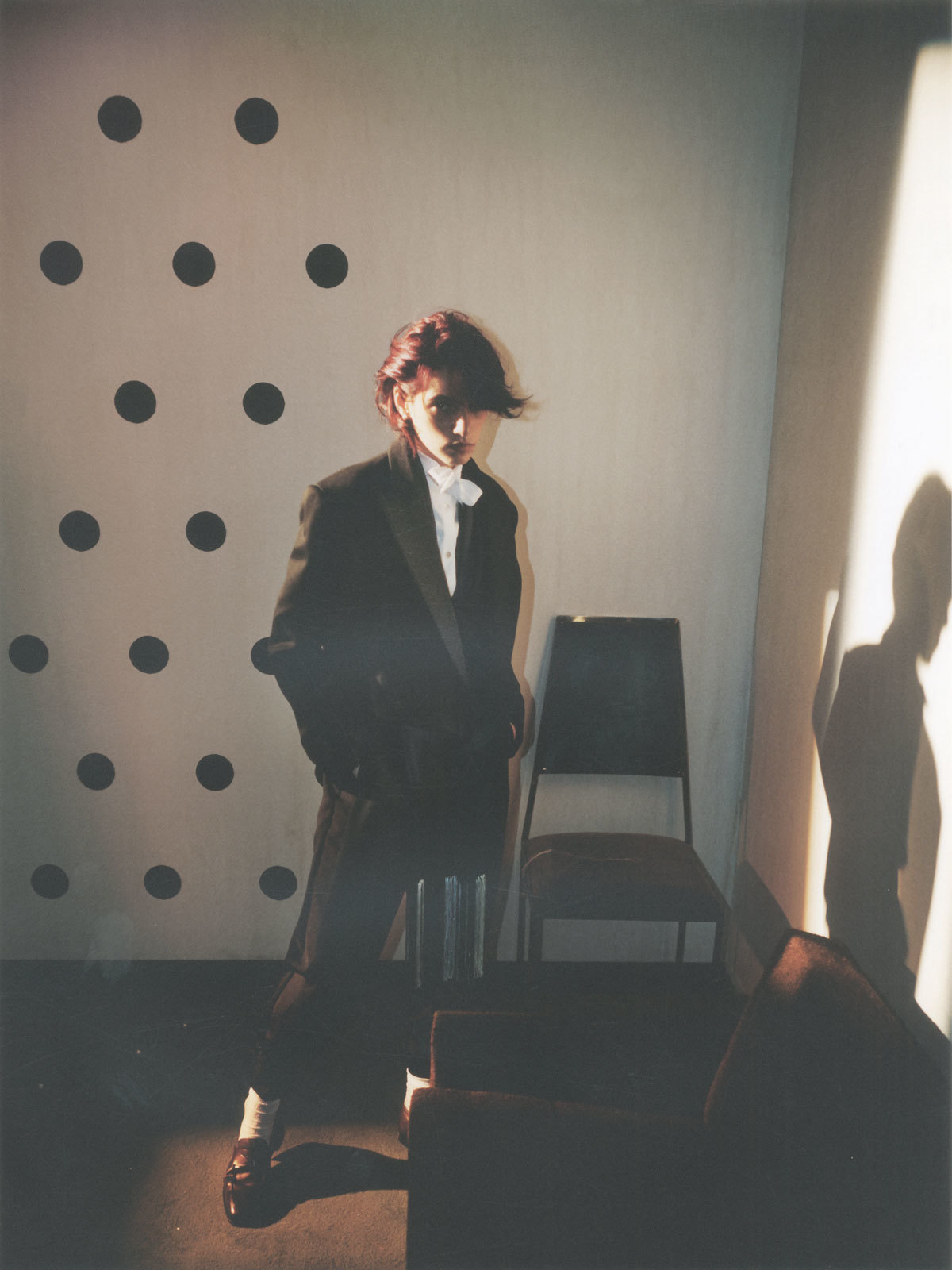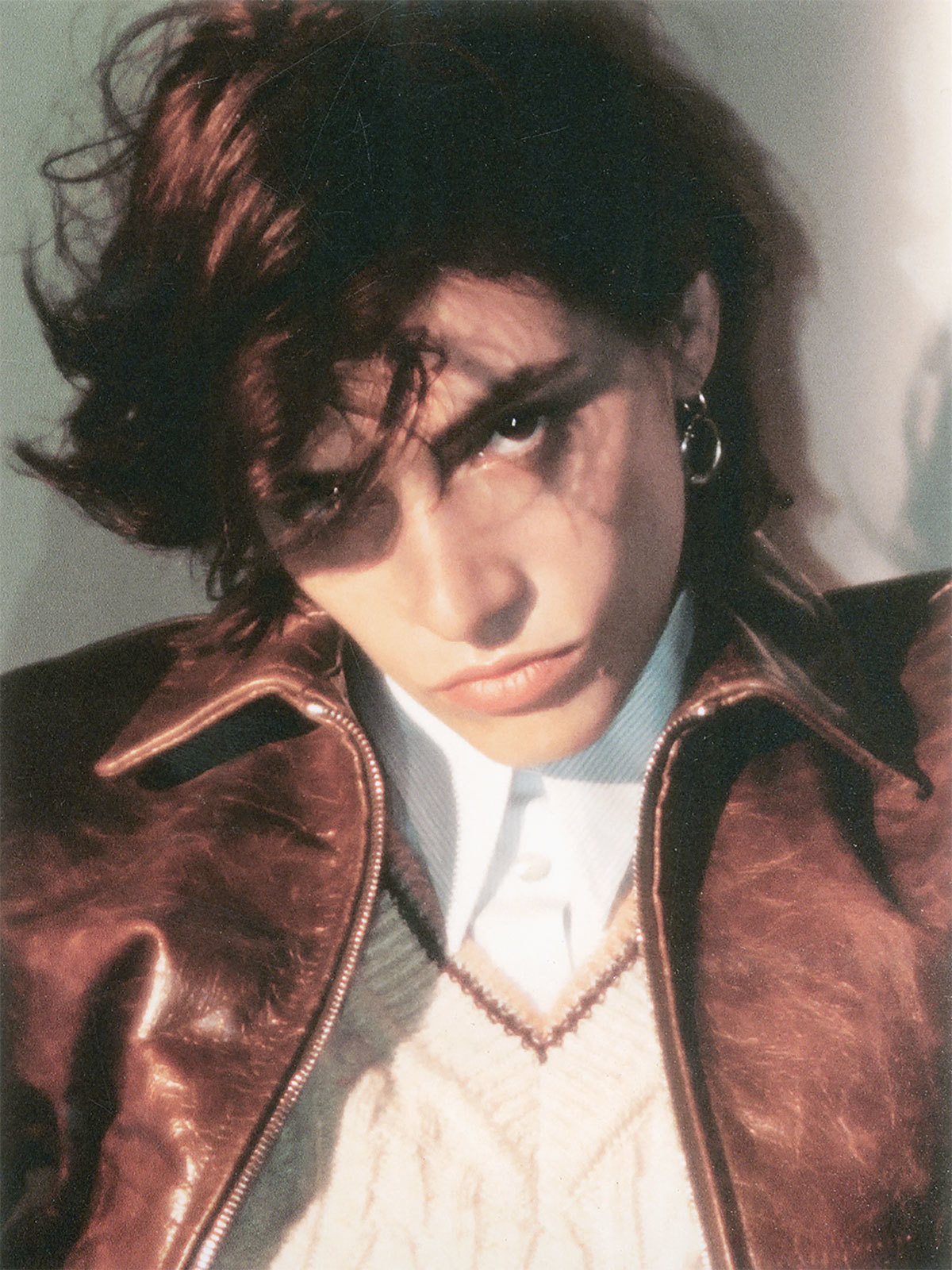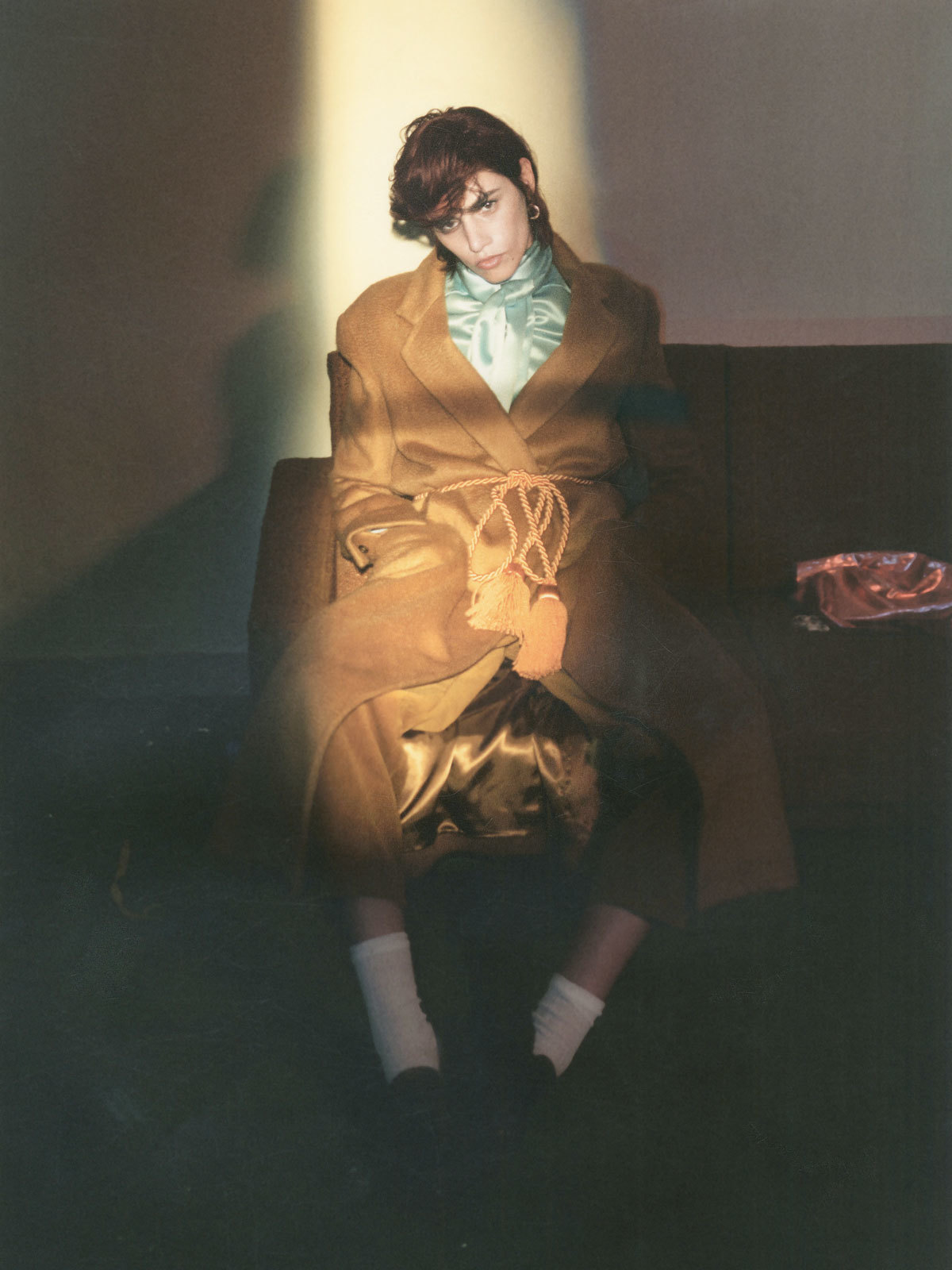Luella Bartley recently bought her first pair of heels. “Oh they’re so slutty. Proper slutty Saint Laurent heels,” she says, chuffed. “It’s more of an empowered slut,” Katie Hillier adds, “because you do feel very bossy in that stuff.” Giving into the stiletto’s sex appeal was something of an epiphany for Bartley, a lifer in the flats department. “I feel like I’ve changed loads in the last year. It was that dress,” she admits, referring to a floor-length crepe gown with a tuxedo scarf attached to it, the showstopper in the debut Hillier Bartley collection the two designers are launching this season. “As you get older you become so much more in tune with your own sexuality. This collection, I feel, is the sexiest thing I’ve ever done. And I know it’s completely covered up and it’s mainly menswear, but it’s so elegant and sexy. And it was kind of redefining what sexy can be,” Bartley says. “For me that menswear-y loucheness is very sexy.” Hillier: “A satin blouse with no bra!” Bartley: “That reminded me immediately of Madonna in a blue Gucci silk…”—”Oh yeah, you could see her nips. That’s what I like,” Hillier smirks.
Perched on a sofa in the foyer of their studio building, the Rochelle School of Arts in Shoreditch, the BFF designers are like a non-stop ping-pong machine of wry mischief, even at 10 AM. Just on the other side of 40, they’ve spent the past 20 years influencing the fashion landscape — Bartley with womenswear, Hillier with accessories. Most recently, they reinvented Marc by Marc Jacobs together, until the line folded into the brand’s main collection. They were already planning the new label before that happened, and what Bartley calls the “grown-up, woman-friendly” spirit of Hillier Bartley isn’t a reaction against the hyper-young aesthetic the pair perfected at MBMJ. It’s an answer to what they felt fashion was missing for women like themselves—wrapped in a label run by themselves, on their own terms. (Hillier continues to work for Marc Jacobs). You could say they’re building a new empire, but you’d be wise not to. “We’re building a semi-detached, made out of sandstone,” Bartley quips. “It could be Georgian,” offers Hillier.

It’s the independent core of Hillier Bartley, and part of an ethos that’s really quite rebellious in an industry where megalomania is heaven and youth worship is the reverence that’ll get you there. “It’s a different kind of rebellion when you’re older. Young rebellion is full of angst and energy, and older rebellion is a real kind of personal don’t-give-a-shit-about-what’s-going-on and you become so comfortable in your skin that you just do what you want,” Bartley says. Their first collection, shown only to buyers in the spring and shot for its public unveiling on these pages, is a handsome and somewhat princely line of pristine tailoring: the perfect camel coat, silky pussy bow blouses, and that grand de-formalized gown that defines the sophisticated sex appeal of the collection. “I’m still wearing jeans and T-shirts but I feel like I have more presence in those things now,” Bartley explains. “And those are the clothes we’re making, that give a woman presence. It harmoniously fits with an experienced personality.”
“We’re not trying to make catwalk clothes, we’re trying to make clothes that have a design quality to it but also a real quality to it. It hasn’t got bells and whistles,” she says. A pause. “That jacket with the tassels is pretty bells and whistles,” Hillier laughs. They were first introduced by mutual friend Katie Grand in 1999. Soon, Hillier — Greenford-bred and educated at the University of Westminster — began designing accessories for Luella, the eponymous label Bartley — a Central Saint Martins alum from Stratford Upon Avon — had founded that same year and would front until its closure in 2008. They both spent their twenties in the golden age of London’s underground scenes, in a time before social media would gentrify subculture. “We never felt like we were in it,” Bartley says. “Oh I did,” Hillier ponders. Bartley: “Hindsight creates a lot of underground. Actually, being at a rave you felt like you were.” Hillier: “You really did.” Bartley: “It just felt like youth. You were an army of youth and very different. That was a good feeling.”

In the 2000s, Bartley played a huge part in the rise of the indie Brit girl movement and put Mulberry back on the map when she created the brand’s Gisele bag. Hillier has been behind some of fashion’s most famous accessories through her work for designers from Stella McCartney to Marc Jacobs and Victoria Beckham. If the accomplishments that shot them to fashion fame sprung from the environment surrounding their youth, however, they haven’t allowed it to define them. Quite the opposite. Hillier Bartley is the embodiment of the cool indie girl, who has now grown up and is feeling sexy in a different way. (Not that it in any way excludes women under thirty, as proved by early customer Florence Welch.) “I still wear sequinned leopard print dresses with thigh high suede boots,” Hillier says. “But they’re flat boots, they’re not high boots. And the dress is a certain—you know, it’s decent.”
You could say the collection — much like Bartley and Hillier themselves — is youth in a grown-up shell. But with their aged, authoritarian femininity there’s a certain sort of eccentricity to the garments. “Vanity with a touch of vagrant,” Bartley says, echoing a quote used about Lucian Freud. “It’s that kind of eccentricity: an aged eccentricity, a subtle eccentricity.” It’s certainly reflected in the characters that inspired it: Ian McCulloch of Echo and the Bunnymen, Withnail from Withnail and I, Edward VIII, David Bowie, Virginia Woolf, Princess Anne, and Katharine Hepburn. But, as Bartley says, “You’ve put the years in so you’re allowed to use the references. They feel personal as opposed to going, ‘That’s cool. I’ll have that.’ Which, admittedly, is what I used to do. I’d go, ‘Ooh, Kathleen Hanna, I’ll have a bit of that!’ And I hadn’t even listened to the music.”

Above all, it’s about taking charge and the independence that comes with it, creatively as well as commercially. “It’s about not taking dictats from anywhere else. We’re doing what we can cope with and what we can control and what we feel comfortable with. We’re not gonna make a north-south tote just because everyone else is.” Bartley says. “And that might mean we don’t make as much money, but we’re kind of okay with that,” Hillier adds. “Obviously we want to make money, that’s why we’re doing it — it’s our vanity project — and we believe in our product, but we’re not going for world domination. We’re going for cottage industry.” In other words: no shows, no presentations, and no pre-collections—anytime soon, anyway. “These sweeping statements you always regret,” Bartley laughs, “but at the moment I feel like I could happily not do another show. I don’t think it fits with what we’re trying to do. I would much prefer to show someone, and talk about it myself and have them trying things on and feeling it.”
@hillierbartley
Credits
Text Anders Christian Madsen
All imagery courtesy of Hillier Bartley
